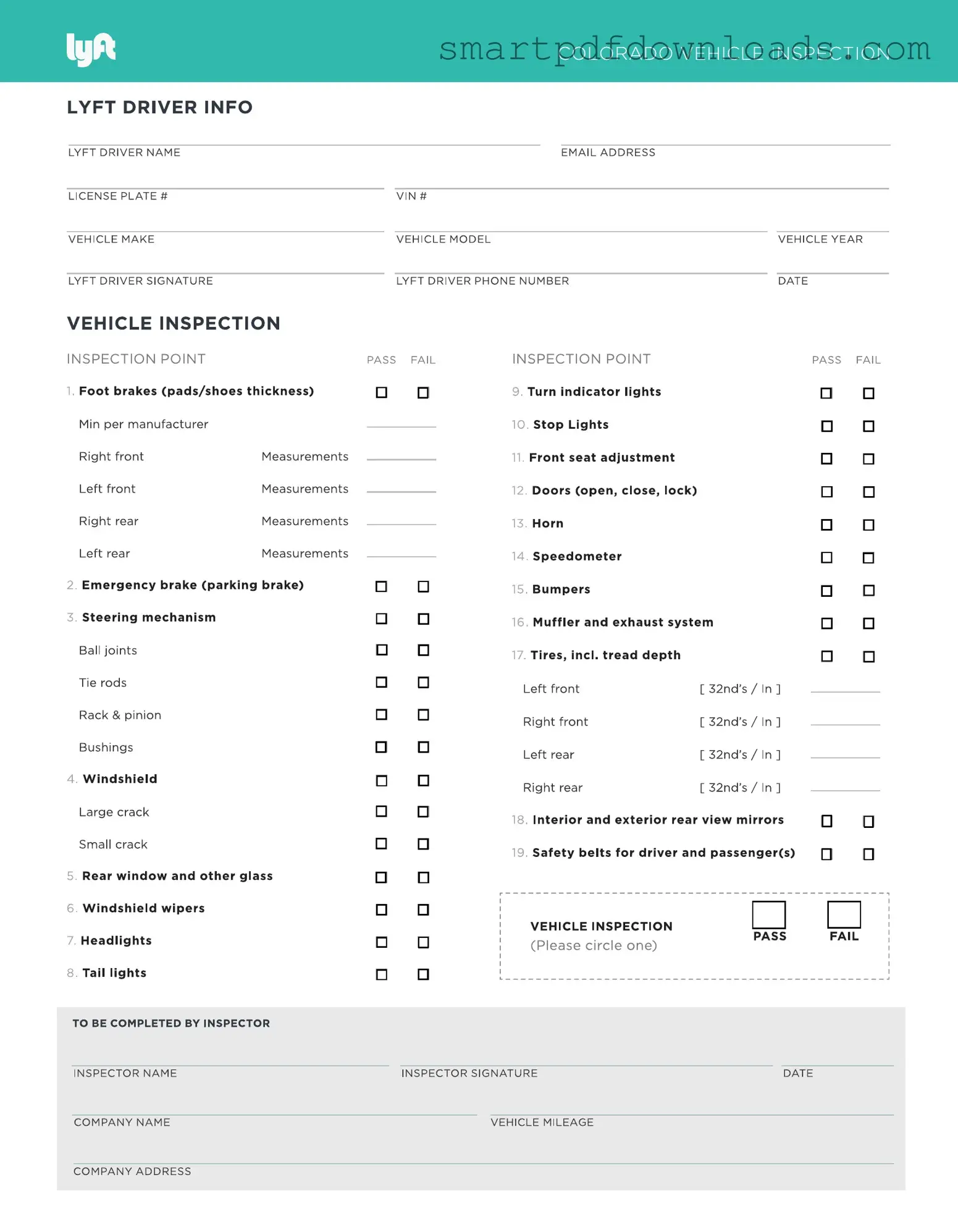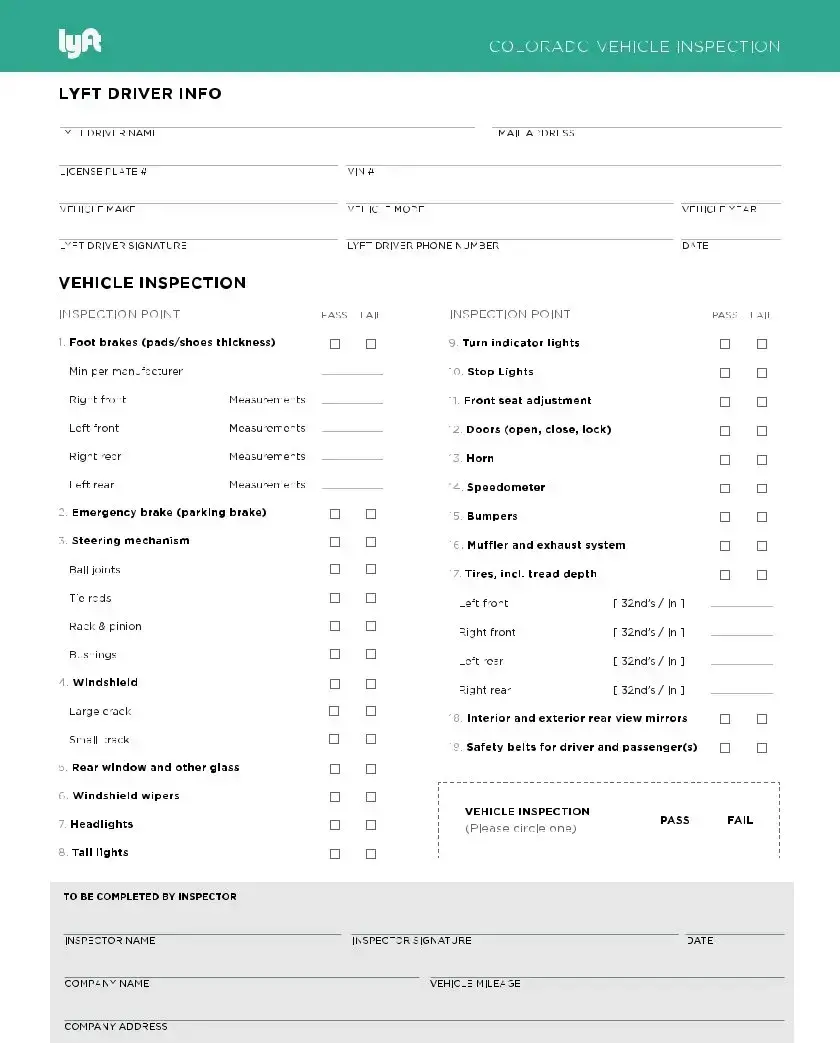Lyft Inspection Form
The Lyft Inspection form is a document that ensures vehicles meet the safety and operational standards required for rideshare services. This form is essential for drivers to maintain compliance with Lyft's policies and local regulations. Completing the inspection is a crucial step in providing safe and reliable transportation for passengers.
Edit Lyft Inspection Online

